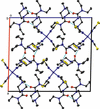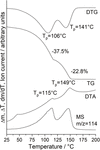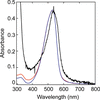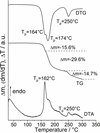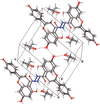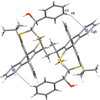issue contents
March 2023 issue

Cover illustration: Fluoroquinolones constitute an interesting group of compounds that have found applications as antibiotics due to their enhanced pharmacokinetic properties. They display high oral bioavailability, are well tolerated and can be used in a wide variety of infections. From the synthetic point of view, they are highly versatile since the basic fluoroquinolone skeleton can be substituted at different points at the same time. Certain types of substituents can render them useful in the treatment of mixed-origin infections and they may be good candidates as both antibacterial and antiviral agents. In this article, Vaksler et al. present the crystal structure of a potentially useful substituted fluoroquinolone, 1-benzyl-6-fluoro-3-[5-(4-methylcyclohexyl)-1,2,4-oxadiazol-3-yl]-7-(piperidin-1-yl)quinolin-4-one. Molecular docking studies of its interactions with the active centres of macromolecules with anti-hepatitis B activity and anti-Covid-19 main protease activity indicate enhanced affinity, compared to the reference ligands. Hydrogen-bonding and hydrophobic interactions play an important role in the formation of complexes in the active sites of the selected targets. See: Vaksler, Hryhoriv, Ivanov, Kovalenko, Georgiyants & Langer [Acta Cryst. (2023). E78, 192–200].
modern approaches and tools for teaching crystallography
research communications















































 journal menu
journal menu



















